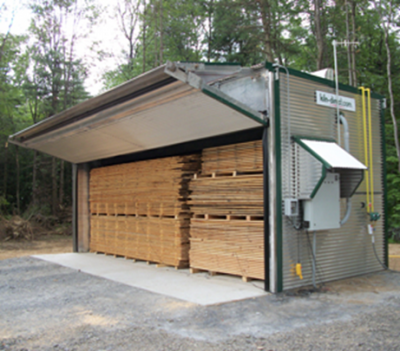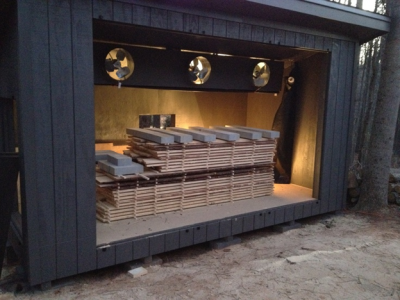Mastering Moisture: Understanding Moisture Content in Wood
-l (1).jpg)
For woodworking professionals and enthusiasts alike, understanding the moisture content of wood is paramount. It not only ensures the longevity and stability of the finished product but also significantly influences the woodworking process itself. At Atlas Dowel & Wood Products, we prioritize educating our customers about the crucial aspects of wood properties, including moisture content, especially when it pertains to making dowels and other wood turnings. In this comprehensive guide, we will delve into the intricacies of wood moisture content, explaining its importance, its effects on dowel and turning production, and how it is accurately measured.
Understanding Wood Moisture Content
Wood is a hygroscopic material, meaning it can absorb and release moisture in response to its surrounding environment. The moisture content of wood is expressed as a percentage, representing the amount of water in the wood compared to its dry weight. Achieving the appropriate moisture content is crucial for maintaining the stability and quality of the wood, as fluctuations in moisture can lead to warping, cracking, and other issues.

Importance of Moisture Content in Dowel and Turning Production
Dimensional Stability: For products like dowels and wood turnings, dimensional stability is critical. The wood must maintain its shape and size throughout its use. If the wood’s moisture content is too high or too low for the intended environment, it can lead to changes in size and shape, affecting the fit and functionality of the finished product.
Machinability: The moisture content of the wood influences its behavior during the machining process. Wood that is too wet can be difficult to cut cleanly, resulting in a rough surface, while overly dry wood can lead to chipping and cracking.
Finish Quality: Wood’s moisture content also affects how it accepts finishes. Properly balanced moisture content ensures that stains, paints, and sealants adhere properly and result in a smooth, even finish.
Durability: Achieving and maintaining the correct moisture content is key to ensuring the long-term durability of wood dowels and turnings. Wood that is too moist is more susceptible to decay and insect damage, while wood that is too dry can become brittle.

Methods of Measuring Moisture Content
Understanding how to accurately measure the moisture content of wood is crucial for any woodworking project. There are two primary methods used in the industry:
Oven-Drying Method: This is considered the most accurate method for measuring wood moisture content. A small sample of the wood is weighed, oven-dried, and then weighed again. The moisture content is calculated based on the weight loss during drying. While precise, this method is time-consuming and destructive to the wood sample.

Moisture Meters: Moisture meters are the most common tool used for measuring wood moisture content in the woodworking industry. They provide quick and non-destructive readings, allowing for efficient monitoring of wood moisture.
There are two types of moisture meters: pin-type, which measures the electrical resistance between two pins inserted into the wood, and pinless, which uses electromagnetic fields to measure moisture content at the surface or at a specific depth. This is the method Atlas dowel uses to ensure the moisture content is within spec before processing the raw material.
Adapting to Environmental Conditions
Wood’s moisture content will naturally equilibrate to the conditions of its environment, a process known as equilibrium moisture content (EMC). Understanding the EMC of the environment in which the wood product will be used is crucial for ensuring long-term stability and performance. Woodworkers need to adapt their materials and processes to these conditions to prevent future issues.
For dowel and turning production at Atlas Dowel & Wood Products, we pay meticulous attention to the moisture content of our materials:
Material Selection: We select wood species and grades that are well-suited for achieving stable moisture content and that respond predictably to environmental conditions.
Controlled Drying: Before dowels and turnings are produced, the wood is carefully dried in controlled conditions to bring the moisture content to an optimal level.
Precision Machining: Our state-of-the-art machinery is designed to handle wood with specific moisture content ranges, ensuring clean cuts and consistent results.
Quality Control: Every batch of dowels and turnings undergoes rigorous quality control checks, including moisture content verification, to ensure that our products meet the highest standards.
Customer Education: We believe in empowering our customers with knowledge. By understanding the importance of wood moisture content, our customers can make informed decisions and achieve the best possible outcomes in their projects.
Proper Storage: Once produced, our dowels and turnings are stored in controlled conditions to maintain their moisture content until they reach the customer.
Understanding and controlling the moisture content of wood is a foundational aspect of woodworking, particularly when it comes to precision products like dowels and wood turnings.
At Atlas Dowel & Wood Products, we are committed to excellence in every step of the production process, ensuring that our customers receive products that are not only aesthetically pleasing but also stable, durable, and reliable. By mastering moisture, embracing precision, and committing to quality, we help turn your woodworking visions into reality. Choose Atlas Dowel for products that stand the test of time, project after project.

